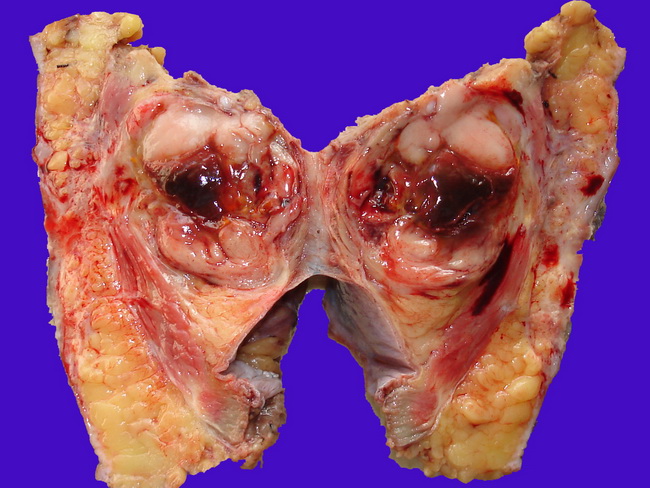Synovial Sarcoma : Clinical & Gross


Comments:
Age: Synovial sarcoma is usually seen in adolescent and young adults, but it can occur at any age. The mean age at diagnosis is about 34 years. Children under the age of 10 years and even newborns can be affected. Clinical Features: It usually presents as a deep-seated soft tissue mass associated with pain and/or tenderness. Given its para-articular location in most cases, it may be misdiagnosed as arthritis, bursitis, or synovitis. It may cause limitation of joint movement; however, severe joint dysfunction is rare. Involvement of nerves may lead to referred pain, numbness, and paresthesias. Gross Pathology: Synovial sarcoma tends to be yellow to gray-white, well-circumscribed, round to oval, multilobular mass with partial or complete pseudocapsule. The tumor is usually attached firmly to the tendons, tendon sheaths, or joint capsule. Some tumors show prominent cysts. Poorly-differentiated tumors have ill-defined infiltrative borders and a variegated appearance due to areas of necrosis and hemorrhage. Case History: The image shows a resection specimen with synovial sarcoma. The patient was a 10 y/o female who presented with swelling of anterior abdominal wall. A core biopsy showed a spindle cell tumor that was positive for vimentin and CD99 and negative for CD34 and EMA. Note the attachment to aponeurosis and the hemorrhage. Microscopy revealed a monophasic fibrous type of synovial sarcoma. Image courtesy of: K.V. Santosh, MD, India.



